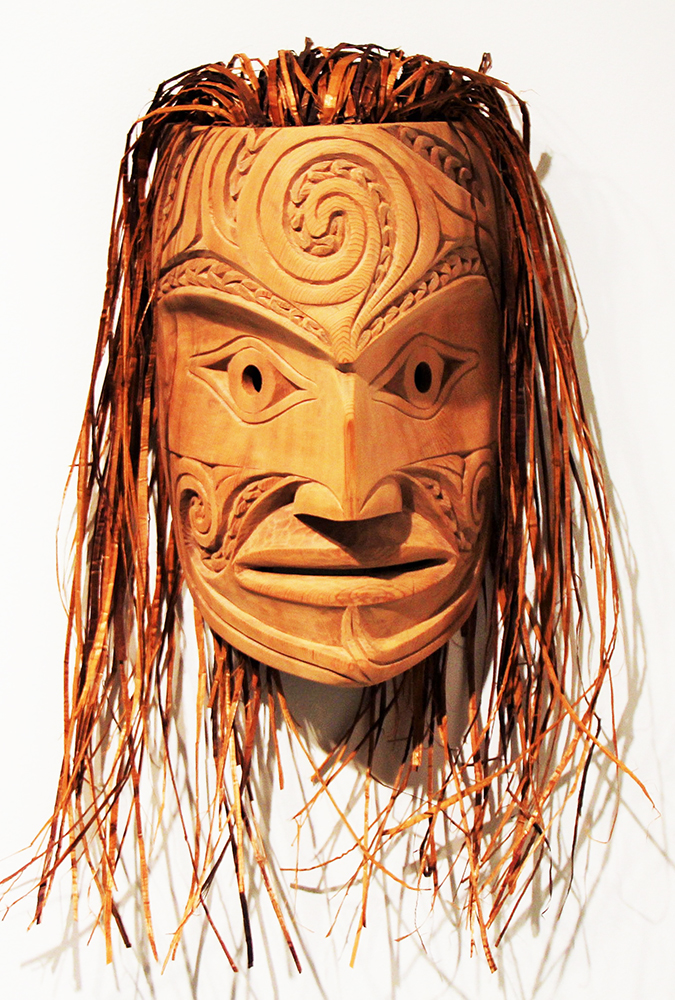
By Micheal Rios, Tulalip News
In the ancestral language of this land, Lushootseed, the phrase sgʷi gʷi ?altxʷ means House of Welcome. More than just a name, the Longhouse Education and Cultural Center at Evergreen State College in Olympia being officially dubbed sgʷi gʷi ?altxʷ gives credence to a reciprocal relationship that is both open hearted and open minded.
Created in 1995 as a public service center, the Longhouse’s mission is to promote Indigenous arts and cultures through education, cultural preservation, creative expression, and economic development.
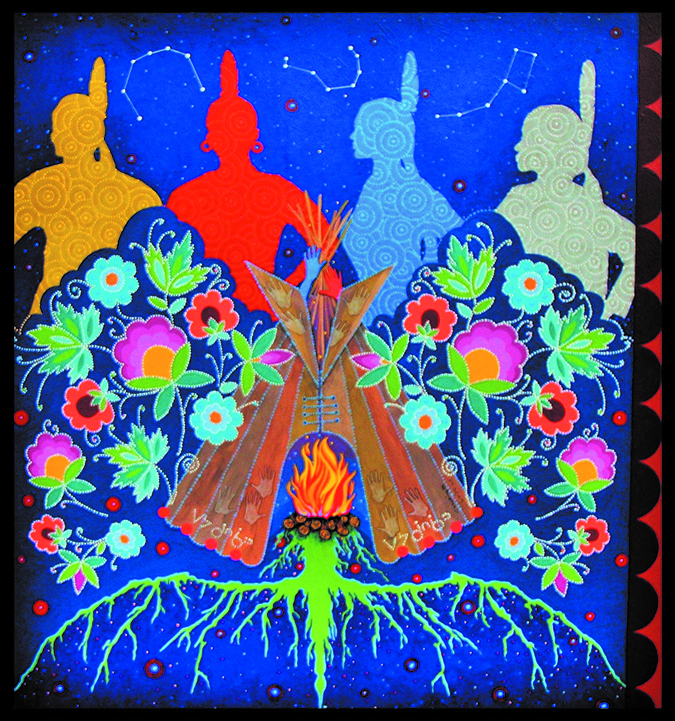
In the beginning, the cultural center’s focus was on six local Puget Sound tribes and their ever-evolving artists. Today, the Longhouse collaborates with highly talented Indigenous artists throughout the Pacific Northwest region, across the nation, and distant lands spanning the globe. Through residency programs with master artists, culture bearers are inspired to develop their abilities while expanding their imaginative capacities in pursuit of creating entirely new boundaries for what defines ‘traditional’ and ‘contemporary’ designs.
“Art allows us to sing without a song, to give our true spirit into something we create out of something nature has given us,” explained Master artist Bruce Subiyay Miller (Skokomish). “Our people create with the natural elements of wood, plant fibers or native plants. Through these acts of creation, our culture continues to live today.”
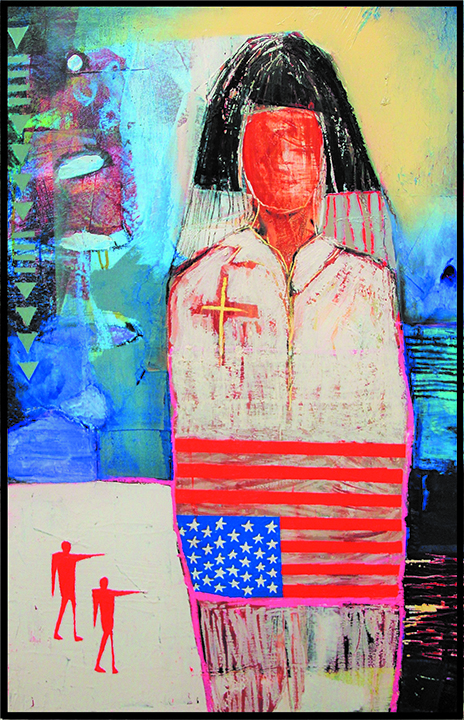
“Young Nation is a painting using direct visual symbology to create dialogue about the attempted erasure of Indigenous cultures through forced assimilation by violent European colonization in the Americas. American mythologies of ‘manifest destiny’, ‘frontier expansionism’ along with the use of Christianity’s land claims via the Doctrine of Discovery were utilized to enact agendas such as: Indian Boarding Schools, Termination acts, Relocation acts, Reservations, land theft and biological warfare.
This systemic and environmental racism is still happening across Indian Country today. Young Nation asks the questions: is forces colonization worth the attempted erasure and destruction of Indigenous culture, art and paradigm?
There is sadness and pain in recognizing the losses, but there is also an empowerment in acknowledging the injustice. When the dominant culture is unaware of the ugly horrors in our shared histories, such as the Indian boarding schools whose motto was “Kill the Indian, Save the Man,” then I feel creating paintings that bring light to these cultural secrets are of the utmost importance.”
To celebrate the House of Welcome’s 25 years of groundbreaking work we examine an art exhibition that truly captures the essence of what it means to facilitate cross cultural exchange. Building Upon the Past, Visioning Into the Future showcases cultural concepts and next level skillfulness from over 70 Indigenous artists with whom the Longhouse has built relationship, from the early days, right up to the present.
Curated by Longhouse staff members Erin Genia (Sisseton-Wahpeton Oyate) and Linly Logan (Seneca), this one-of-a-kind exhibition features beautiful artistry from tribal members that call this land home. Local tribal representation include Squaxin Island, Skokomish, Puyallup and many other Coast Salish tribes. Tribes from across the nation are also represented, from Alaska to the Great Plains, and across the Pacific Rim, including Native Hawaiians and Maori artists from New Zealand.
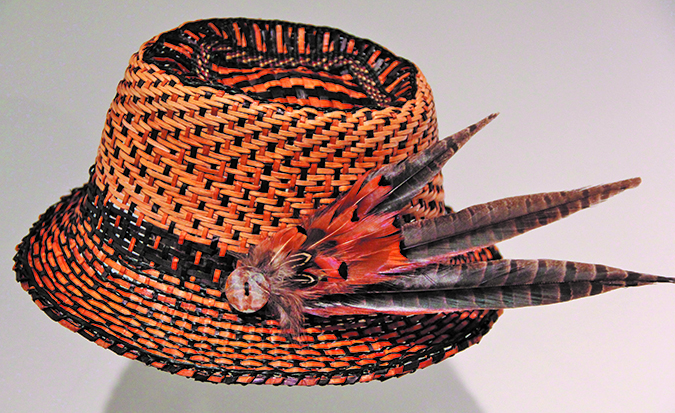
“Though I have incorporated commercial dyes and contemporary materials into my work, my husband Dave and I still enjoy gathering and preparing the traditional cedar bark, bear grass, cattail and sweet grass I use in my weaving. I have found a passion in expressing my creativity through my weaving and marvel at the creations of our ancestors fashioned without the use of modern day tools and processes. The more I study their work, the more I marvel as I continue to strive to produce my own renditions of their work.”
“This exhibition reflects the [twenty-five years] of building relationships with artists locally, regionally, nationally and internationally,” stated exhibition co-curator Erin Genia. “Native artists are using so many different methods for expressing themselves and we really wanted to display as many of those methods as possible. The result is we have close to ninety beautiful pieces of art, treasures really, that make up this exhibition.”
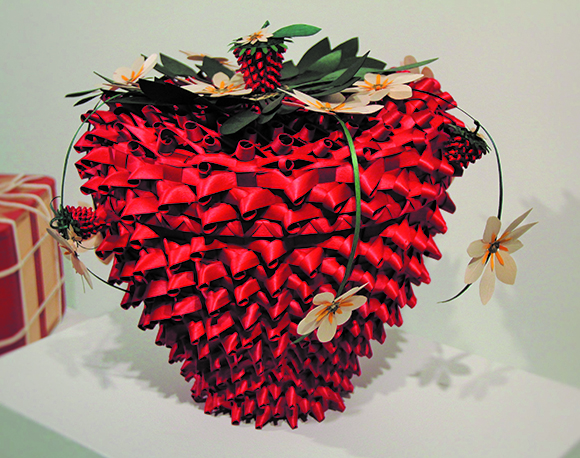
The subjects and techniques exhibited by the Longhouse artists draw from a diverse range of stylistic traditions, which arise from cultural teachings, ancestral lineages, and each artist’s unique experience as Indigenous peoples. Works on display include paintings, drums, carvings, beadwork, photography, baskets, and jewelry.
Glass vessels created using basket designs demonstrate the way traditional design can beautifully translate into new media. Other sculptural forms created in clay, bronze and wood, alongside two-dimensional prints, paintings and drawing spotlight the mastery of mediums that Longhouse artists are fluent in.
“As a curator of this exhibition it’s such an awe-inspiring experience to hear from the artists themselves as to the perspective and inspiration behind their artwork,” added fellow co-curator Linly Logan. “We have artists who are very traditional and roots oriented; artists who use the natural resources around them to showcase their creativeness.
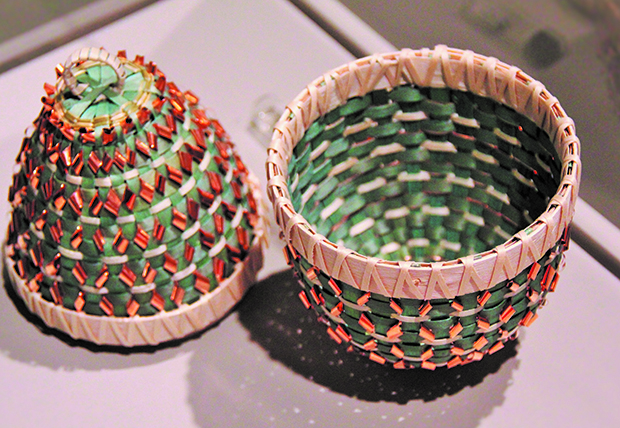
“As Native and Indigenous people we’ve always used the resources around us,” he continued. “In a contemporary lifestyle in nature, we’ve continued to use the resources around us which now include materials other than natural materials. We’ve come full circle in our intent to build upon the past and vision into the future creatively and intellectually as Indigenous people.”
The House of Welcome graciously allowed Tulalip News staff a private tour of the exhibition so that we could share a glimpse of the amazingly creative and exceptional Native art with our local community. These artists are luminaries of their cultures, lighting the pathway back into the far reaches of history, and leading the way into the future with their creative vision.